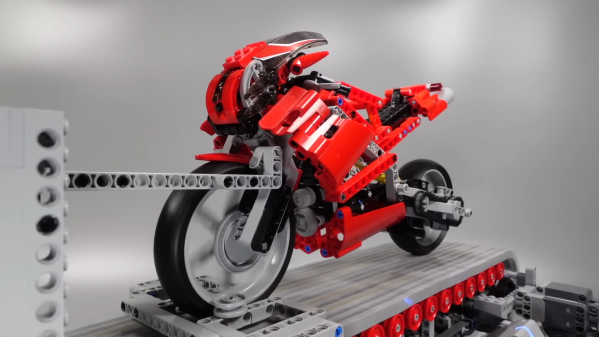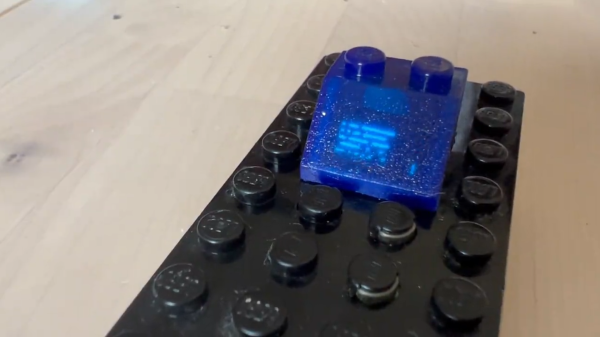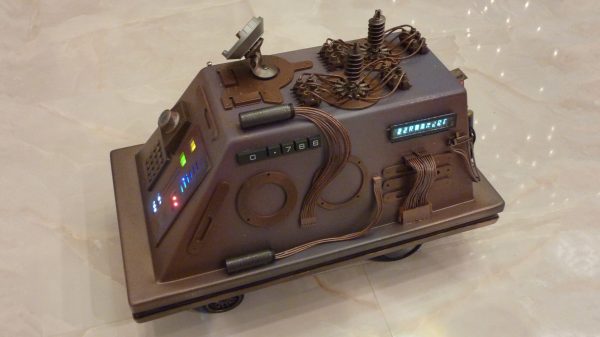When it comes to the development and testing of performance suspension, it’s helpful to have a test apparatus that lets you recreate certain conditions reliably. This LEGO suspension dyno does just that, and it’s clearly a big help for those doing R&D on minifig motorcycle suspension.
The build relies on four motors to overcome the resistance of turning a chunky conveyor belt, which acts as a rolling road. As the belt is built out of Technic beams, various LEGO blocks can be added to the conveyor to act as bumps or perturbations for testing suspension.
The video demonstrates the use of the dynamometer, showing how a simple LEGO motorbike design deals with bumps of various sizes. It’s easy to swap out forks and springs and change the geometry to tune the suspension, and the changes can be easily seen when running it through the same test conditions.
While we don’t imagine there are too many people working in this particular field, the lessons being taught here are valuable. This setup allows one to quickly visualize how changing vehicle parameters affects handling. It’s hard to imagine a better teaching tool for vehicle dynamics than something like this that lets you see directly what’s really going on!


















